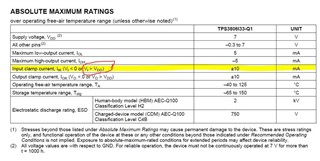Will you please confirm if the following circuit is violating any of the ratings in the datasheet.
If yes, please help to provide any calculations on priority.
Also in case input / KL30F line may have +/- 150 volts for 50 msec or 5 seconds, which specifications will get violated if any.
We understand injection current for Vin > VDD is +/- 10 mA.





